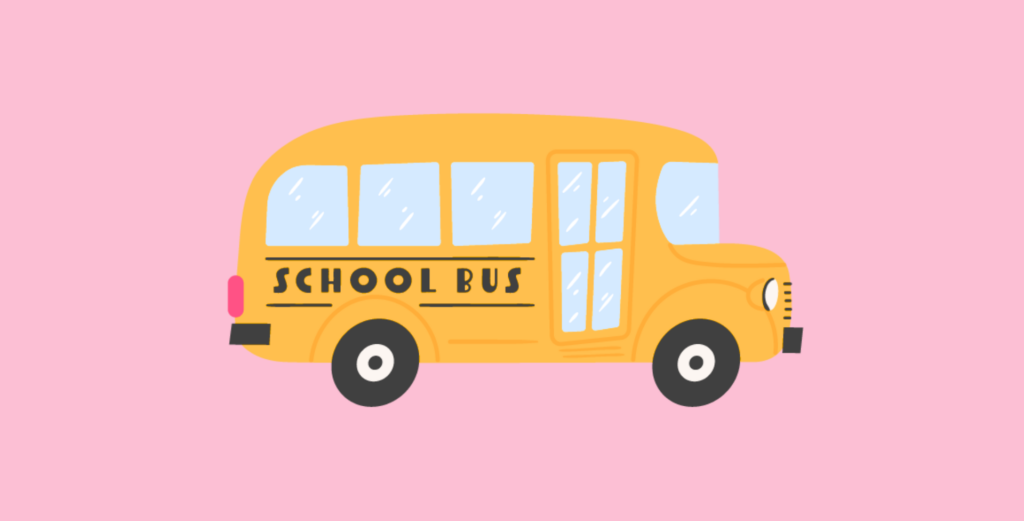
After-school restraint collapse is a term used to describe the often common, meltdowns some kids have after school. More common in younger kids, under age 12, it involves a child who is at the limit of their self-regulation capabilities after a long day at school, and who are at their limit to hold it altogether.
For younger school-aged kids, it can take a lot to self-regulate all through the day. They have listened in class, followed the rules, walked single file to the restroom and cafeteria, and maybe ridden in a hot, noisy bus at the end of a long day. When they finally get home, there’s relief. There’s no longer any reason to hold it all in. It’s like taking a cap off of a fizzy beverage. All the emotions they have been pushing down all day come bubbling up to the surface.
While after-school restraint collapse can be challenging to deal with, meditation and mindfulness practices can help.
While the behaviors of a child having an after-school restraint collapse seem like a tantrum or a meltdown, there is a difference. Tantrums are most common in younger kids, under age four, and usually result from a child not getting their own way, then feeling frustrated or angry and not having the words to communicate their needs.
Temper tantrums are most common when a child is hungry or tired. They often relate to the child wanting, but not getting something, like a candy bar the grocery store, not wanting to do something, like leave the playground, or wanting attention and being left out, like when grownups are talking and they feel ignored.
Meltdowns look a lot like tantrums, and have many similar behavioral components. Often when a child is having a temper tantrum, they look out of control, but are very much in control and trying to use their screaming and full body movements to control a situation and get what they want.
If you give your child in the checkout line the candy bar they are screaming for, and the behavior stops, it was probably a tantrum. If you give a candy bar to a child in a checkout line, who is exhibiting similar behaviors, and the behavior continues, it is likely a sensory meltdown, meaning the child has become overwhelmed or scared, and does not know how to respond to all of the internal and external stimuli.
Sensory meltdowns are much more extreme, and like a panic attack, once they begin, they take time to calm down. That is because sensory meltdowns can cause intense emotional and physiological symptoms like:
A sensory meltdown can often occur when a child has been in an environment that is too stimulating for them, possibly for too long. This could be a place with a lot of lights, sounds, and smells, like a grocery store, holiday party, or school setting. Sensory overload happens and next comes the meltdown.
After school restraint collapse, is much more like a sensory meltdown than a toddler-style tantrum. Children experiencing a sensory meltdown or after-school restraint collapse have literally done just that…they have melted down and collapsed, emotionally and maybe even physically. They have reached their emotional regulation limit, and are out of coping skills and the ability to keep it all together. The child is usually beyond the point of reason and has no ability to keep themselves physically safe.
Like a sensory meltdown, after-school restraint collapse is caused by similar factors:
For many children, all of the above factors contribute to the after-school restraint collapse. Parents are often surprised by these behaviors, especially when they learn that their child was perfectly behaved at school all day, which is part of the problem. Many kids can hold it together in school all day, it is the transition back to the home environment or the after-school routine that causes stress. Some kids may feel immense relief that now they can truly be themselves. They may feel they don’t have to hold it all together, and they don’t want or have the capability regulate anymore.
Any child can struggle with an after-school restraint collapse, and children who have them do not necessarily have them every day. While any child can have them, they are more common in children with ADHD, autism spectrum disorders, sensory processing disorders, or other neurodivergent disorders.
When you think about all of the expectations kids have in school, from learning, managing peer and adult relationships, eating on a fixed schedule and in a noisy cafeteria, and having their every moment determined by an authority figure, it’s easy to understand why they leave school feeling overwhelmed and at their capacity.
It’s not just kids who experience restraint collapse either, adults can too. For example, when an adult has a stressful day at work, they know how to regulate their emotions and practice self-care behavior. This might look like listening to soft music on the commute back home, grabbing a favorite latte, or going to the gym. Adults know what works for them and have a much better ability to practice emotional regulation than kids, which is why they collapse. When they’re given tools and strategies to help them identify and cope with their emotions, their after-school behaviors can greatly improve, leaving you and your child, feeling a lot better.
There may not be ways to completely prevent an after-school restraint collapse, but there are many ways to make them happen less often and reduce their severity.
One of the best ways to prevent or reduce these episodes is knowing what it is, and realizing that it is a real condition your child needs help with. Often adults want their child to “push through” and stop their behavior. Unfortunately, it isn’t easy for some kids to transition, especially after reaching their emotional regulation capacity during school. It’s also important to remember that your child doesn’t want to feel this way.
A good start at reducing the severity of restraint collapse is talking with your child about what they’re experiencing. Share with them that what they’re feeling is normal and okay. Begin this conversation during a time your child is calm and ready to share their feelings.
Different kids need different things when experiencing sensory overload. Think about what seems to be triggering your child, or ask them what might help them with the after school transition. Here are some common needs kids may have in the car, when you are walking home with them, or when they arrive home after school:
Quiet time. This might mean not asking about their day on the way home or as soon as they walk in the door. It may mean driving home in a silent car and letting them enjoy the ride without talking or loud music.
Movement. Some kids may need to run and move, jump on a trampoline, or stop at the playground to let off some steam.
Allow expression of pent up emotions. For kids who leave school feeling they are about to burst, allowing them to yell, scream, or cry, before they are in full meltdown mode, might be a good strategy. If they know they can freely release these pent up emotions, in the comfort of the car, or back at home, a lot of pressure comes off of them. It may also help them to understand that a caring adult recognizes their needs and they aren’t alone.
Give them a break. Immediately after school may not be the time to ask a lot of questions about their day, rush them off to activities, or sit them down to begin homework. Schedule in a break when they get home from school, whether they want to play outside, watch a favorite cartoon, or listen to a meditation, is completely up to them.
Some children who struggle with after-school restraint collapse are doing so because they have been upset and frustrated by the separation from a parent or caregiver. This is called defensive detachment, a term used by early childhood psychologists to describe the anger that kids, usually little ones, have when reunited with their parents after school, preschool or day care. The child may be angry that they spent the day away from the adult and that they had to manage big emotions on their own, as well as navigate life at school without their caregiver’s support.
Kids with defensive detachment may desire some quiet time to reconnect with their caring adult as soon as they get home. This might be hugs and cuddles, reading a book on the sofa, or having a snack together. If you think they might be upset about something, you can offer help, or see if they want some alone time to decompress and let the dust of the day settle.
Kids who struggle with after-school restraint collapse or have defensive detachment often enjoy feeling connected to a loved one throughout the school day. You can do this by leaving notes in their lunch box or backpack, surprising them with a special treat, etc. This often reminds kids that they aren’t alone and have a caring person waiting for them at home.
Studies have found that routines can positively impact children’s development, including emotional regulation skills. Routines help children know what to expect, in the case of restraint collapse, they help reduce feelings like uncertainty and fear about after-school time.
When creating a relaxing after-school routine, it’s important that your child is a part of this process and shares what they find calming. For example, some children may want to jump on a trampoline before an after-school activity, while others may prefer to quietly enjoy a snack. With a little prompting, your child will let you know what helps them feel their best. Allowing your child to co-create part of their after-school routine can also be a source of empowerment for them and helps after-school become a time they look forward to.
Both adults and kids are connected to the lights, sounds, and energy around them. For a child with a proclivity towards after-school meltdowns, as much as possible, keep your home a calming space.
For children who have difficulty after-school, sensory stimuli at home can trigger after-school restraint collapses. To mitigate these triggers, try to keep sensory triggers, like bright lights and loud sounds, to a minimum.
Research has shown that mindfulness can positively impact children’s behavior and emotion processing. For after-school restraint collapse, practicing mindfulness, overtime, may help kids be more in-tune to their physical and emotional needs, as well as communicate more easily.
Children can practice mindfulness in a variety of ways. They can practice mindful breathing, mindful playing, mindful movement, and mindful listening. This might look like a child taking a few slow breaths, paying attention to how their body feels with each inhale. It might look like practicing mindful activities or going for a mindful walk, noticing all the sights and smells around them. As kids become more comfortable with mindfulness, you can encourage them to practice it throughout their day. In time, mindfulness can help kids improve their emotional regulation and feel better after school.
Similar to mindfulness, meditation has also been found to help kids improve their emotional regulation, as well as reduce stress and anxiety, improve focus and patience, and boost overall positivity and mental health. Meditation can help kids reduce sensory overload before it happens, identify feelings and emotions more easily, and calm themselves in situations that are overwhelming. Like most skills, meditation needs to be incorporated into your child’s daily life before it can start helping them with transitions, like after-school.
Introducing meditation into your child’s routine is easy and can be customized to fit their preferences. There are many different types of meditation, but kids typically do better through guided, or narrated meditation, to keep them fully engaged with the practice.
Guided story meditation. A type of meditation where meditation techniques are woven throughout the narrative. Story meditations use visualization and imagination to explain concepts and teach skills through a relatable storyline.
Moving meditation. A type of meditation that combines intentional movement with focused awareness. Movement is felt with the intention of cultivating awareness within the body.
Body scan. A type of meditation where parts of the body are scanned to locate feelings of stress, pain, or tension. Bringing awareness to these areas fosters a non-judgmental connection to the body and is helpful in identifying negative emotions.
Many children enjoy having a dedicated meditation space they can use for their meditation time. For some children, after school might be the perfect time to relax listening to a guided story meditation. Other children might want to do a body scan meditation to release all the tension they have carried in their bodies all day. Still, other children may enjoy a focused meditation, like repeating a mantra or an affirmation while listening to a soothing soundtrack or meditative drumming music.
Other meditation practices that children may enjoy after school include progressive muscle relaxation, creative visualizations, and loving kindness meditations. Whatever mindfulness or meditation practices your child enjoys are the right ones for them, and are the ones that should be included in their calming after school routines.
No matter what type of practice your child gravitates towards, meditation should be taught how little ones learn best, with creativity and imagination. In time, meditation and mindfulness can help your child better manage big emotions and handle transitions, like after school, more easily.
Wee Meditate teaches kids research-based meditation practices through in our unique storybook method. Sign up today and experience the benefits of meditation with your child.

